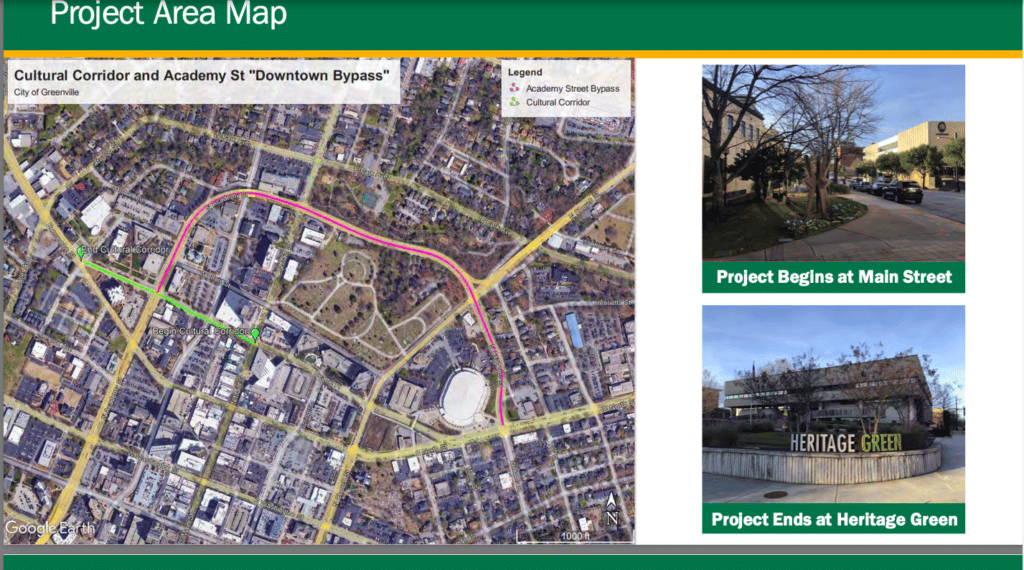
Greenville Cultural Corridor project set to increase pedestrian safety
Grace Myers, Managing Editor
Downtown Greenville is on its way to becoming safer for pedestrians as the City of Greenville’s Cultural Corridor project is set to begin the first steps of construction.
The project will span from Main Street to Heritage Green. Main Street is the city’s highest pedestrian area. Heritage Green is the city’s “cultural destination” and includes a wide variety of art and culture destinations, including Greenville County Library, Greenville Theater and the Children’s Museum. The artistic aura of this area attracts a wide variety of individuals, including college students
“I love the area because of the heavy emphasis on the arts,” said area native and sophomore business management major, Maria Bump. “It inspires me to embrace my own creativity. I remember my first trip to the Greenville County Museum of Art, seeing the ‘Recovery Wing’ by sculptor Grainger McKoy and feeling chills just standing there.”
But while Main Street is a walkable area with trees and separation from the road, as soon as you make that turn towards Heritage Green, everything changes.
“It doesn’t quite feel like it a pedestrian walkway, it feels like it’s geared towards cars,” said Nick De Palma, assistant city engineer and Cultural Corridor project manager. “You don’t quite feel safe, and it’s just not what we want in our central business district.”
To create a feeling of more safety, the Cultural Corridor plans to make a wide variety of changes in multiple locations, including removing some vehicular travel lanes and on-street parking to add wider planting strips and broader sidewalks for shareable pathways.
Additionally, to reduce downtown traffic and accommodate for the removed vehicular lanes, the city plans to implement a “downtown bypass” via Academy Street.
“Academy Street was essentially built to go around our central business district,” said De Palma. “It kind of skirts the outskirts.”
De Palma noted that it is hard to get on and off and that signal issues often make people think that going through downtown may be quicker. Therefore, the project’s goal is to make it more beneficial to go around downtown instead of driving through the business district.
“We want our pedestrians more downtown in the central business district, and our cars more going around,” he said.
After completing the project, De Palma expects to see increased activity and economic growth in the area, including a possible spike in development, including more restaurants, local businesses and cultural activities. He noted that seeing the current changes is really encouraging.
“We are going to try and include some placeholders for art along the way,” he said. “We’ve been talking to the Arts in Public Places Commission about doing something interesting like that.”
Additionally, more plans from the city’s master plan are currently being discussed. However, they are still in the process of reviewing the budget.
De Palma also said he doesn’t foresee any significant road congestion problems as work begins. The beginning stages of construction are set to begin in the fall, starting with the improvements to Academy Street so that the flow of traffic will get used to using the bypass as soon as possible and reduce traffic as the actual corridor construction begins.
Any lane closures are likely to be on weekdays during non-peak hours unless there are schedule issues and the project is crunched for time. The date for project completion is unknown at this time.
For more information on the Cultural Corridor project, including maps, illustrations and the full project timeline, visit the City of Greenville website.
*Featured Image: Image courtesy of Nick De Palma.
